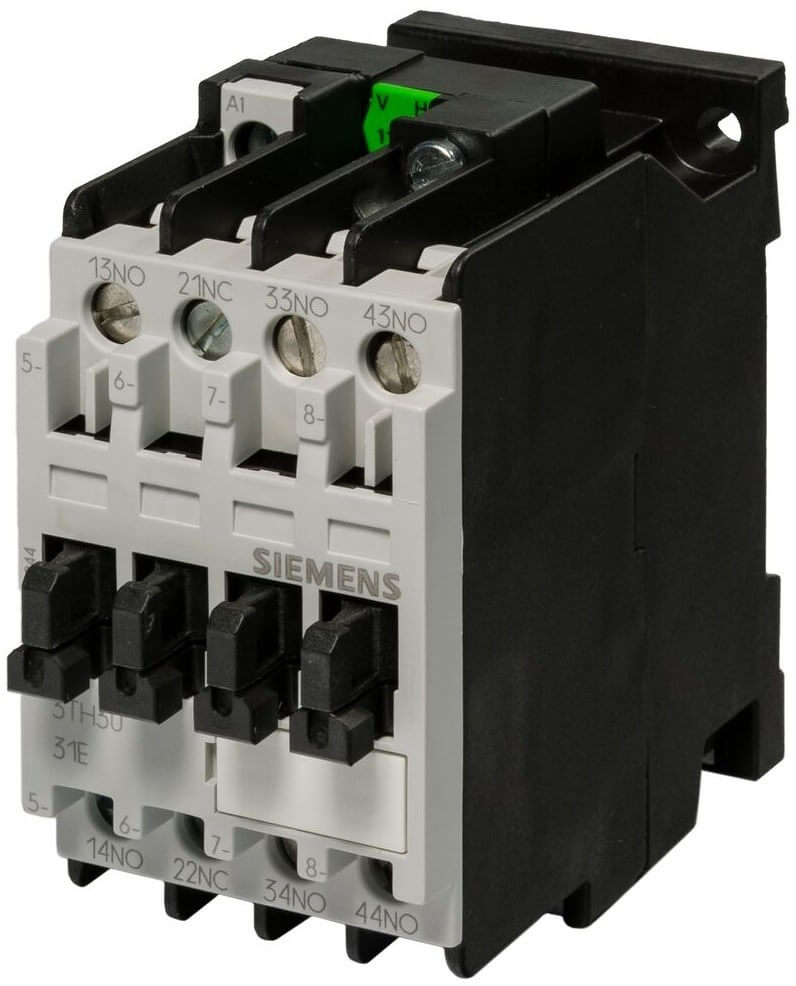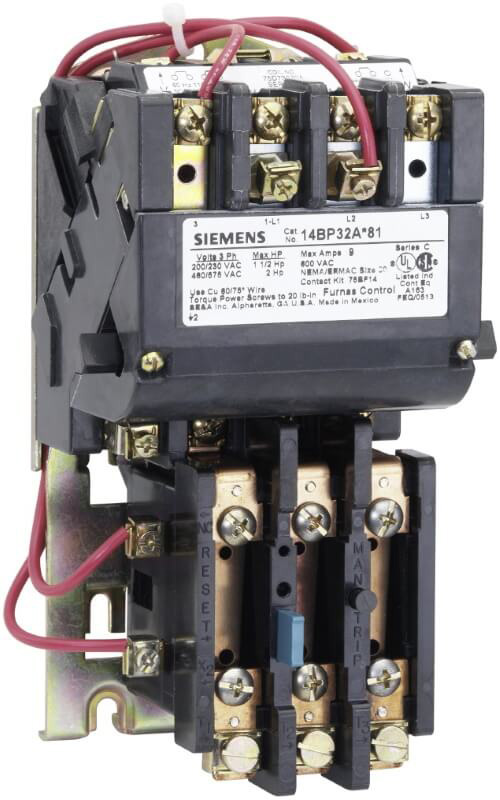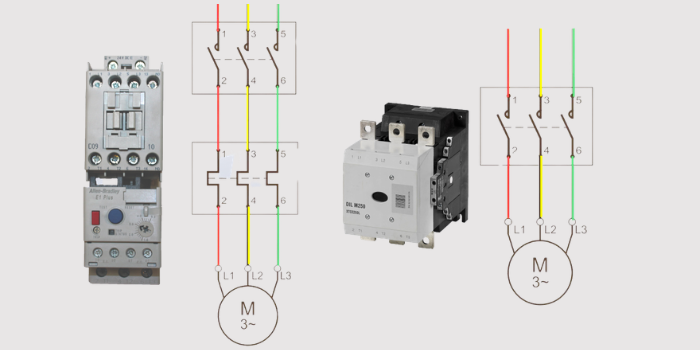Contactor
Contactors are one of the most common and widely used devices in the field of power distribution. A contactor is an electrically-controlled switch. It is a device that switches more than 15 amperes. It is a special type of relay. People use it for switching an electrical power circuit. This circuit has a much lower power level.
The conductor is designed to be directly connected to high-current load devices. A contactor is used to control many devices like electric motors, lighting, heating, capacitor banks, thermal evaporators, etc.

Contactor Features
Here are a few features of a contactor:
- A contactor is composed of an electromagnetic system, contact system, and arc extinguishing device.
- In most cases, a contactor fits with normally open contacts, so that the power to the load is shut off when the coil is de-energized.
- A contactor is compact which can be field mounted easily.
- When interrupting heavy motor currents, a contactor controls and suppresses the arc produced.
- A contactor is not intended to interrupt a short circuit current.
- A contactor can have a breaking current of several to thousands of amperes.
- A contactor can have 24 V DG to many kilovolts.
- A contactor can be small enough to pick up with one hand to a meter on a side.
- A contractor can quickly cut off the AC and DC main circuits.
Starter
A starter is a kind of device or motor which is electrical. It controls the use of electrical power to equipment. As the name implies, a starter ‘starts’ motors. But it also stops, reverses, accelerates, and protects motors. This device is used to rotate or crank an internal-combustion engine to initiate its operation under its own power. But a starter itself can be another internal-combustion engine in the case of very large engines.
An internal-combustion engine is a feedback system that relies on the inertia from each cycle to initiate the next one. In a four-stroke engine, the first two strokes are not powered by the engine itself, but by the starter. Once the engine starts running, the starter is not required anymore as the feedback loop becomes self-sustaining.

Starter Features
A few features of a starter are:
- A starter can be electric, pneumatic, or hydraulic.
- A starter is made from two building blocks: contactors and overloads.
- A starter turns an engine at some speed to start it. This makes the engine suck fuel and air into the cylinders and compress it.
- The starter is mounted low down near the back of the engine in a front-engine layout.
- A starter draws heavy electric current through thick wires from the battery.
- A starter needs a large switch to handle the high current instead of a hand-operated switch.
- This switch needs to be turned on and off very quickly to avoid dangerous sparking.
- A large flywheel gear on the back of an engine meshes with the gears of a starter to turn the central crankshaft.
- A starter motor uses an ignition coil to ramp up its power before engaging.
Difference Between a Contactor and a Starter
“Is it a motor starter or contactor?”
This is a very often asked question. And the confusion is also an understandable one. Since contactors and starters both control electric motors, people usually use the two terms interchangeably. Coil, contacts, arc chutes, usage of lower control voltage, all of these mechanical elements are identical in both contactor and starter. So what are the features that make them different?

Here are those:
- A contactor is an electrically controlled switch similar to a relay. In comparison, a starter is a contactor with the addition of an overload relay.
- A contactor applies voltage to a contactor coil to close the contacts and to supply and interrupt power to the circuit. On the other hand, a starter employs overload relays to protect the motor from load surges by shutting it down to prevent overheating.
- A contactor is without the overload coupled, whereas, with a starter, we have options for different overloads to be used.
- A contactor is generally classified by its voltage capacity in contrast to a starter which is typically rated by its current capacity and the horsepower of the motor for which it is compatible.
- A contactor is exclusively designed to operate with normally open contacts. A relay, on the other hand, is often both normally open and/or normally closed, depending on the desired function.
Posts You May Like



